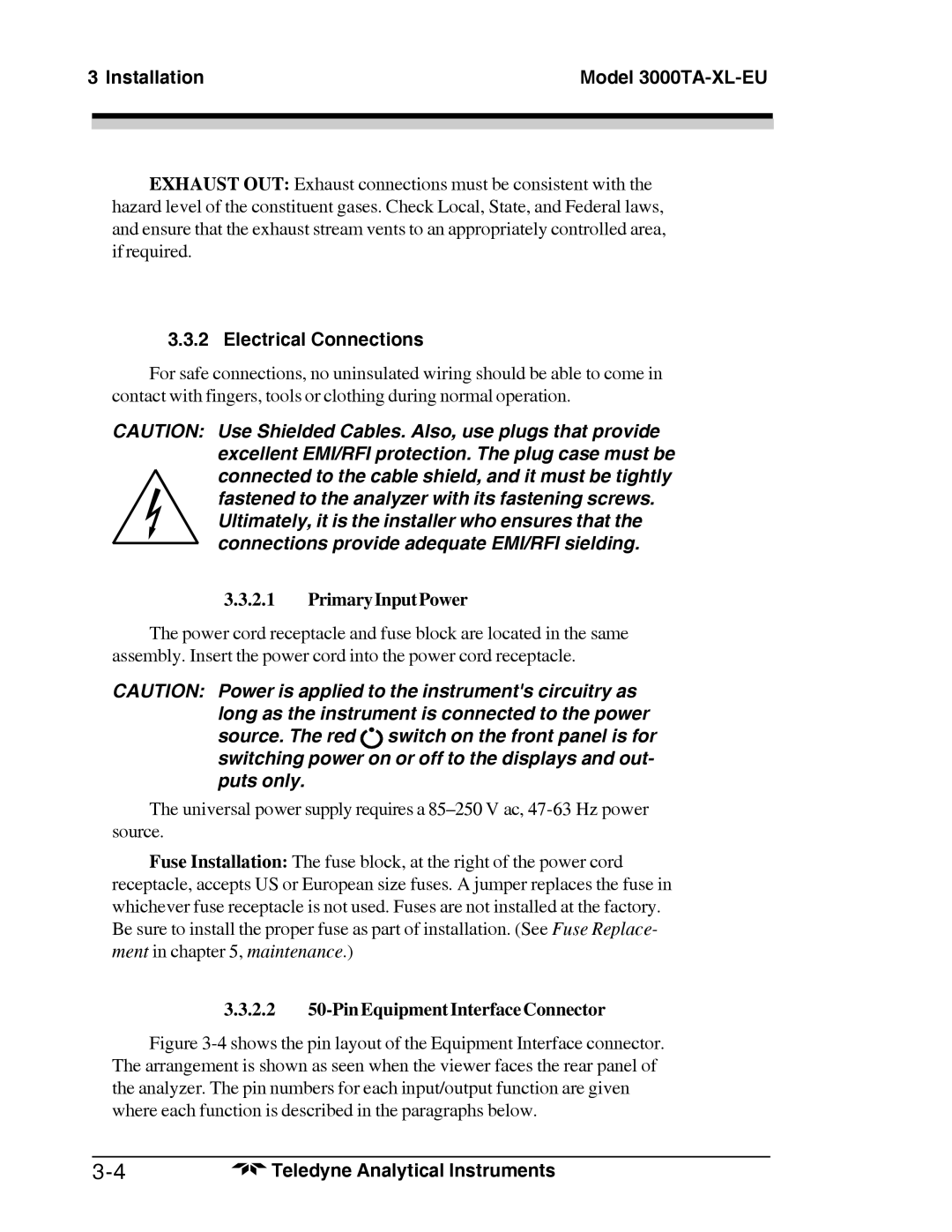
3 Installation | Model | |
|
|
|
|
|
|
|
|
|
EXHAUST OUT: Exhaust connections must be consistent with the hazard level of the constituent gases. Check Local, State, and Federal laws, and ensure that the exhaust stream vents to an appropriately controlled area, if required.
3.3.2 Electrical Connections
For safe connections, no uninsulated wiring should be able to come in contact with fingers, tools or clothing during normal operation.
CAUTION: Use Shielded Cables. Also, use plugs that provide excellent EMI/RFI protection. The plug case must be connected to the cable shield, and it must be tightly fastened to the analyzer with its fastening screws.
Ultimately, it is the installer who ensures that the connections provide adequate EMI/RFI sielding.
3.3.2.1PrimaryInputPower
The power cord receptacle and fuse block are located in the same assembly. Insert the power cord into the power cord receptacle.
CAUTION: Power is applied to the instrument's circuitry as long as the instrument is connected to the power source. The red ![]()
![]()
![]() switch on the front panel is for switching power on or off to the displays and out- puts only.
switch on the front panel is for switching power on or off to the displays and out- puts only.
The universal power supply requires a
Fuse Installation: The fuse block, at the right of the power cord receptacle, accepts US or European size fuses. A jumper replaces the fuse in whichever fuse receptacle is not used. Fuses are not installed at the factory. Be sure to install the proper fuse as part of installation. (See Fuse Replace- ment in chapter 5, maintenance.)
3.3.2.250-Pin Equipment Interface Connector
Figure 3-4 shows the pin layout of the Equipment Interface connector. The arrangement is shown as seen when the viewer faces the rear panel of the analyzer. The pin numbers for each input/output function are given where each function is described in the paragraphs below.
Teledyne Analytical Instruments |
